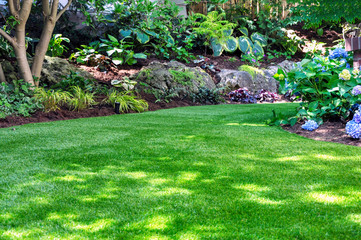A well-planned landscape can help save water and give you a natural habitat. Whether you want to create a beautiful outdoor space or improve the look of your backyard, landscape design can provide various options. Whether designing your landscape or a new garden, you should use some common themes to make your landscape look great. These include form, color, rhythm and repetition, and balance. Following these principles at Landscape Anaheim CA will ensure that your design is functional and beautiful.

The form is one of the most important components of any landscaping style. Choosing the right shape can make or break your design. Depending on the style of your landscape, form may be a vertical or horizontal element or a mixture of elements. Choosing the right colors can give your design dimension and accents. The right colors can also be used to direct the eye to certain areas of the garden.
Contrast is another important concept in landscape design. The contrast between a dark and light shade of a color can make a particular element appear larger or smaller, or it can be used to create a perspective. Using a combination of form and color can achieve the best effect. Texture is also a key element. Rough textures are typically more comfortable to the touch, while smoother textures shrink space. The texture also affects the way the viewer perceives distance and scale.
Choosing the correct rhythm and repetition will create a sense of movement in your landscape. Rhythm can be achieved through repetition of patterns or through the use of alternating patterns.
Plant characteristics to successfully layer and mass plants. Creating a well-designed and well-maintained landscape requires thoughtful plant selection. This doesn’t mean filling each square foot with every possible plant imaginable, but rather using a strategic approach that blends plants with the environment and with each other. The right plants can improve your property’s value and help create a healthy local ecosystem. The right plant in the right place at the right time can also help to control erosion and odors, and provide food and shelter for the area’s wildlife.
One of the best ways to achieve this is by utilizing the layered plant effect. This means using the overlapping plant masses to create a geometrically shaped pattern. The trick is deciding which plants to combine together and which to leave on their own. The correct placement of water features and other hardscape elements aids the layered plant effect. This will result in a more streamlined design.
The most important part of this process is ensuring that all of the plants are grouped together in a fashion that benefits their individual qualities. For instance, the layered plant effect is less effective when plants’ mass is skewed unnaturally, such as an overly long hedge row. This can lead to the creation of an instant landscape, as the plant species is forced to compete for nutrients and space.
Landscape design that saves water and creates a natural habitat. Developing a landscape design that saves water and creates a natural habitat effectively promotes environmental stewardship. It can also improve the value of your property. But before you begin designing your new garden, you need to understand some basic principles. First, you need to learn about the dynamic nature of your landscape. Understanding how your plants, trees, and other objects relate to the architecture of your house and your site is critical to the success of your landscape design.
Next, you’ll need to decide how to organize your landscape spaces. Using patterns, focal points, and geometric shapes can help you organize your plan. Finally, you’ll need to decide whether you want to add a water feature. A fountain can be a beautiful accent, but it can also be overused. You’ll need to ensure the water’s source is below grade. This will allow for easy bathing for wildlife.
You’ll also need to decide where to plant your trees. Often, it’s best to have a large, open bed for your deciduous trees. This will save you money on labor and water. You can also choose to add a water feature, such as a waterfall, to your landscape. This will also provide drinking water for wildlife. You should also install a swales, which are trenches dug perpendicular to a slope. These are effective on gentle slopes. They slow down the water’s movement, thus promoting infiltration.